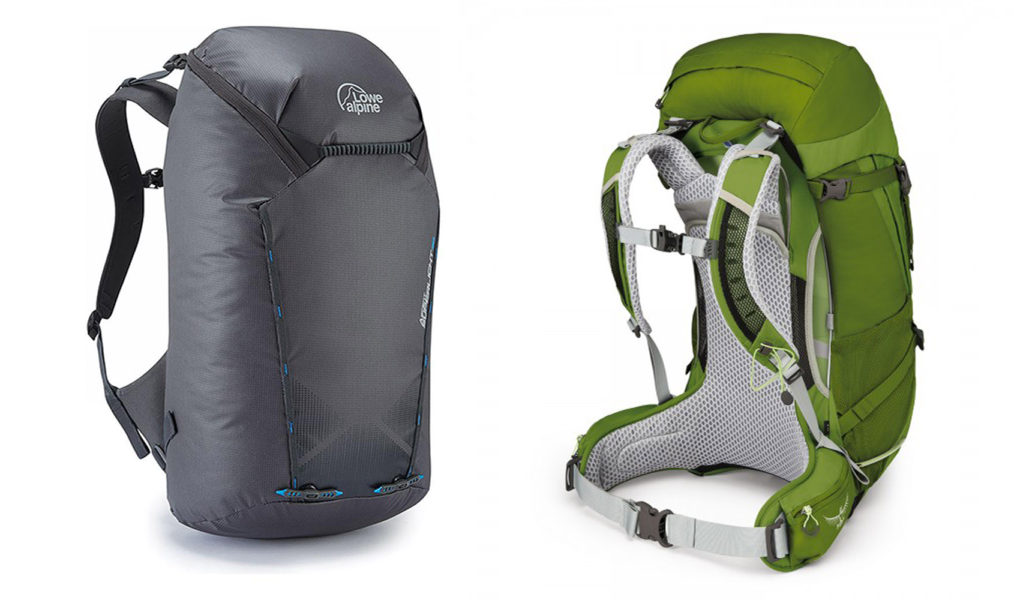So what are the differences between a walking or hiking pack and a technical mountain or climbing pack and which should you choose? Here’s what you need to know to decide.
In a way it’s straightforward: you can use a pack designed specifically for climbing or mountaineering for more general walking and hiking, albeit with some loss of convenience, but it’s harder to do it the other way round.
Climbing packs are designed to be tough and simple. There are no front or side pockets, particularly fragile mesh ones, to catch and snag on the rock. Mostly you’ll just get a simple lid pocket, no more or less.
Back systems tend to be smooth surfaced, so snow doesn’t stick to them with minimal complexity or venting. And hip-belts are either removable or minimal so they don’t interfere with access to the gear-loops on a harness.
You might get a cunning helmet-holding gizmo and you’ll almost certainly find axe-loops, but that’s just about it. Anything that interferes with a smooth, clean exterior is likely to be out.
In contrast, modern hiking and walking packs are getting more and more complicated. Easy-to-access stash pockets first seen on adventure-racing packs have found their way into the mainstream. Back-systems are often suspended with trampoline-type tensioned mesh. Hip-belts get pockets and the overall profile of the pack is more about comfort than streamlined lack of snagging and jamming in confined spaces.
Fabrics tend to be lighter and less abrasion resistant and while back systems are often designed to be comfortable with lighter loads, they can often struggle to cope with heavier climbing hardware like racks, ropes and ice-gear. They’re also often liable to collect wads of clinging wet snow in winter.
What that means is that most walking packs are, at best compromised for technical climbing use. It doesn’t mean you can’t use them for technical stuff, but they’re often far from optimal. In contrast, it’s quite feasible to use a mountaineering pack for more general stuff, but you’ll almost certainly lose out on the convenience of having multiple, accessible pockets and other storage, and the back system may be less comfortable particularly in warm conditions.
Bottom line: if you’re a committed walker with no intention of going climbing, choose a walking pack that suits your needs. But if you’re someone who wants to do more technical stuff going forward, a climbing-type pack is a better choice.
Last but not least, there are a few ‘all-mountain’ packs out there that’ll manage a bit of everything, but they’re few and far between.
If all that seems a little complicated don’t worry too much, watching the recent documentary covering Ant Middleton’s ascent of Everest, it was obvious he was carrying the same, lightweight Osprey hiking pack all the way from Lukla to the summit. You can overthink these things.







